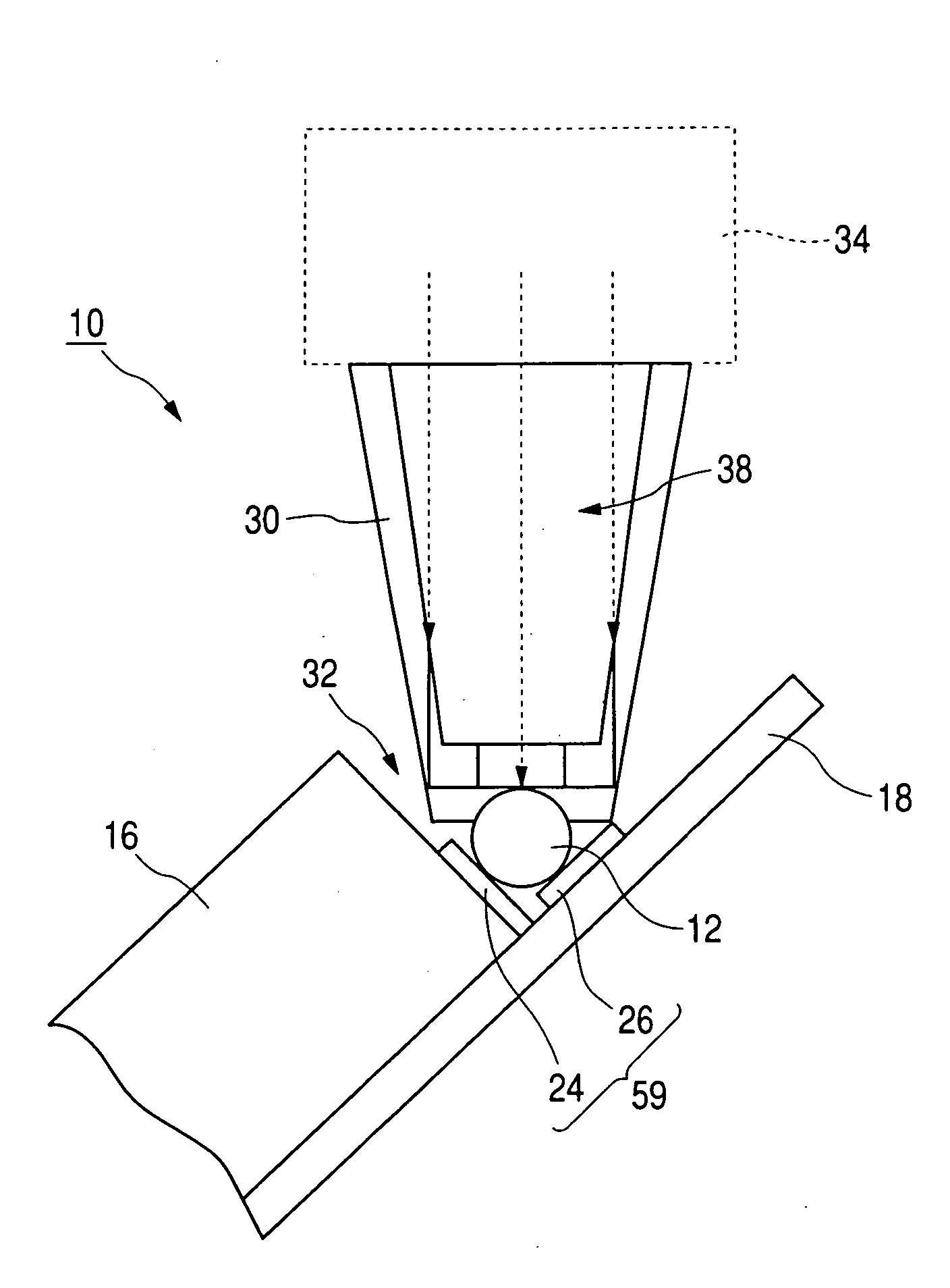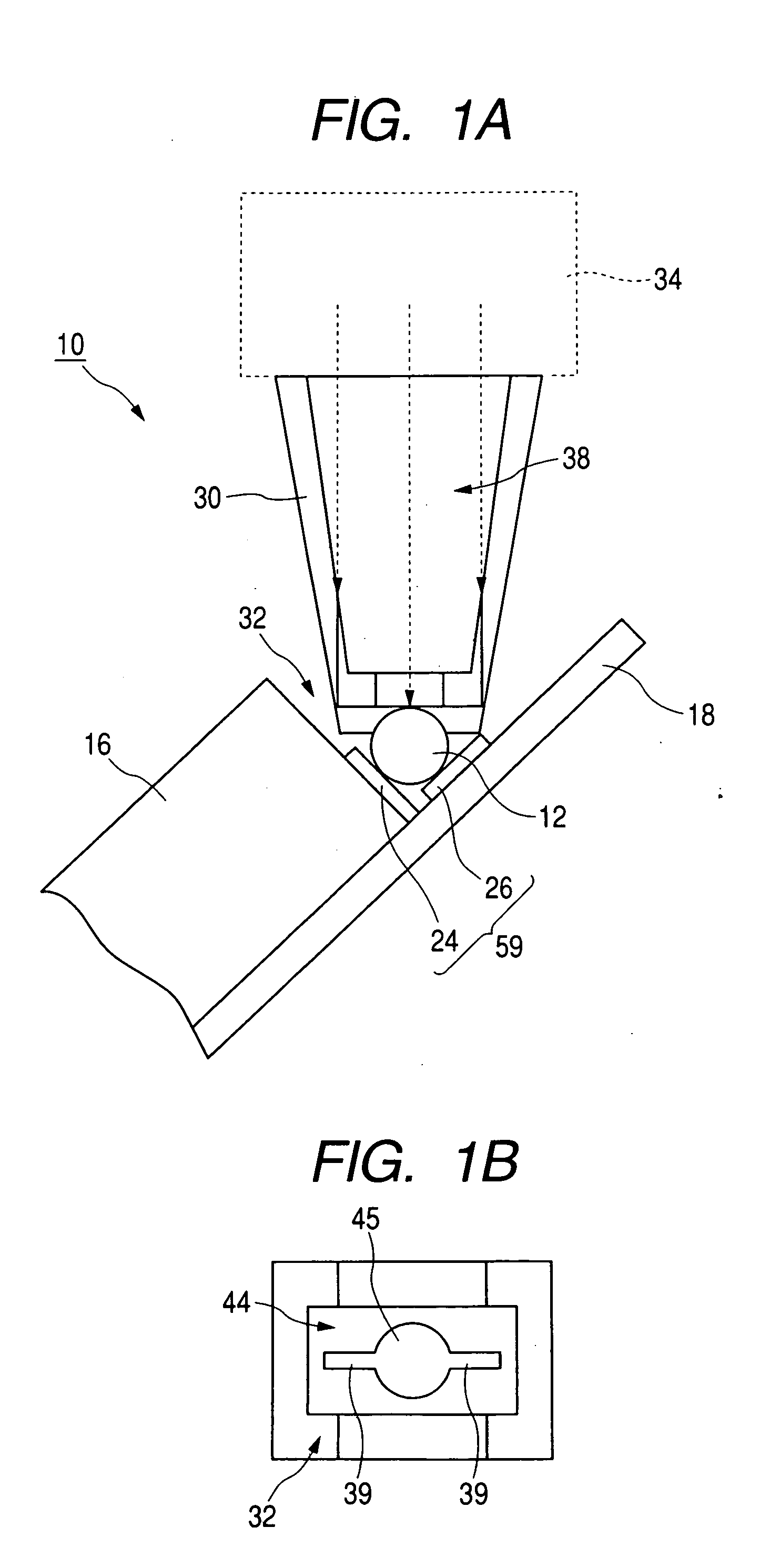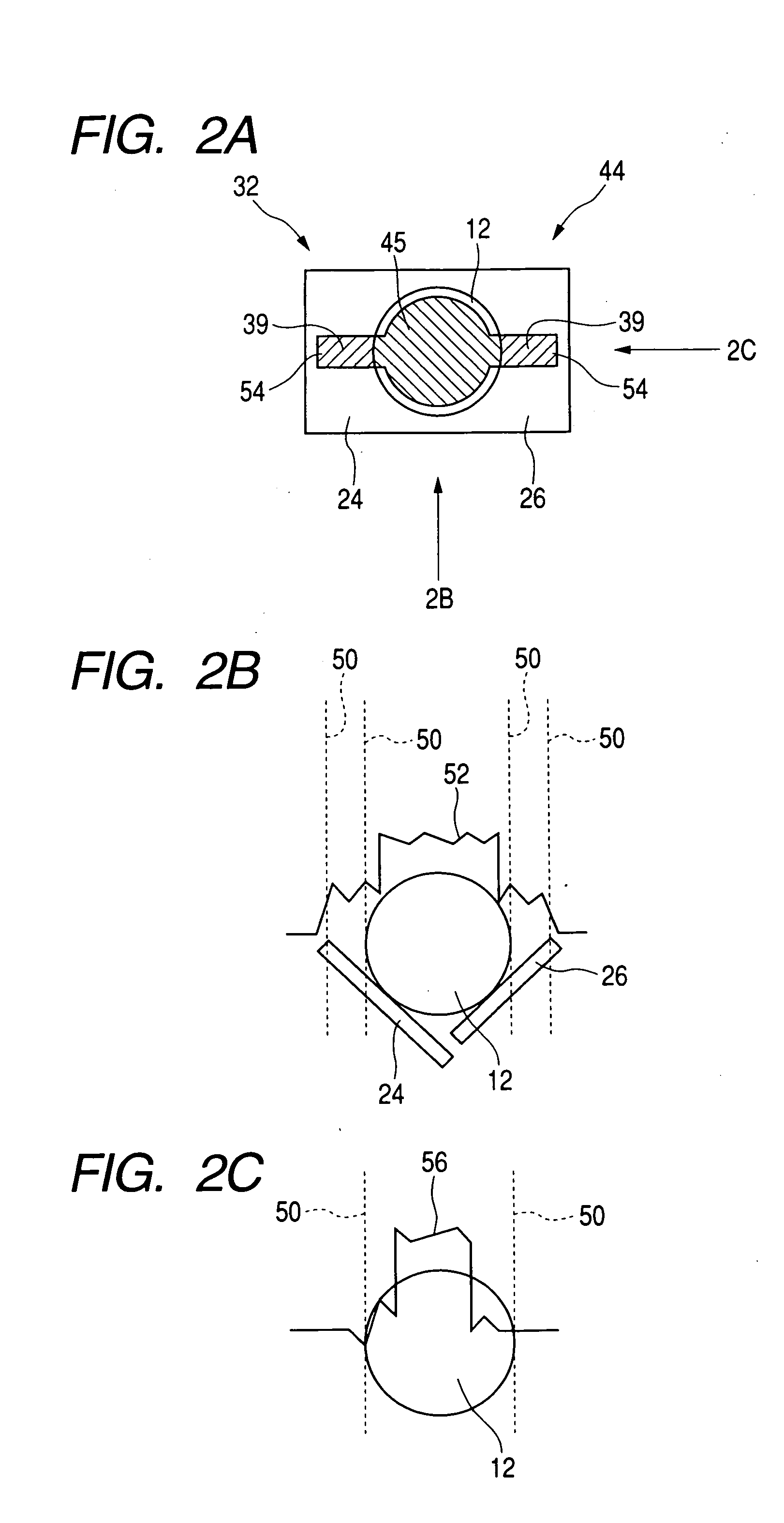Solder bonding method and solder bonding device
a solder bonding and bonding method technology, applied in the direction of soldering apparatus, printed circuit manufacturing, manufacturing tools, etc., can solve the problems of damage to the conventional method described above, and the damage of the periphery of the electrode portion b>6/b>, so as to improve the wettability of the solder, and increase the bonding reliability
- Summary
- Abstract
- Description
- Claims
- Application Information
AI Technical Summary
Benefits of technology
Problems solved by technology
Method used
Image
Examples
Embodiment Construction
[0037] Preferred embodiments of a solder ball bonding method and a solder ball bonding device according to the present invention are explained in detail below while referring to the drawings. FIG. 1A is an explanatory diagram that shows a state in which a solder ball is melted on electrode portions by using a solder ball bonding device according to an embodiment of the present invention.
[0038] As shown in FIG. 1A, a solder ball bonding device 10 according to this embodiment can move reciprocally between a supplying device (not shown) that supplies a solder ball 12 and structural components (a slider 16 in which GMR elements and the like are embedded, and a flexure 18 that supports the slider 16) of a magnetic head that are objects to be bonded by use of moving means (not shown).
[0039] In this embodiment, there are provided a slider-side electrode 24 formed on the slider 16, and a flexure-side slider 26 arranged in correspondence with the electrode 24. The electrode 24 and the elec...
PUM
| Property | Measurement | Unit |
|---|---|---|
| outer diameter | aaaaa | aaaaa |
| wettability | aaaaa | aaaaa |
| surface area | aaaaa | aaaaa |
Abstract
Description
Claims
Application Information
 Login to View More
Login to View More - R&D
- Intellectual Property
- Life Sciences
- Materials
- Tech Scout
- Unparalleled Data Quality
- Higher Quality Content
- 60% Fewer Hallucinations
Browse by: Latest US Patents, China's latest patents, Technical Efficacy Thesaurus, Application Domain, Technology Topic, Popular Technical Reports.
© 2025 PatSnap. All rights reserved.Legal|Privacy policy|Modern Slavery Act Transparency Statement|Sitemap|About US| Contact US: help@patsnap.com



